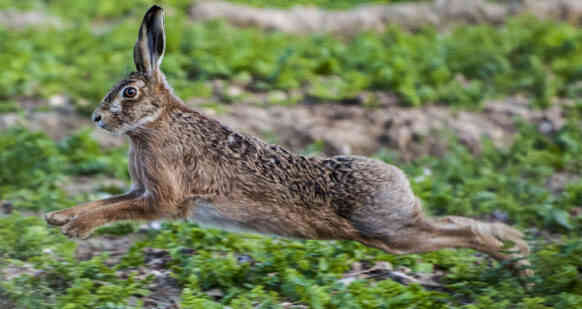Hares — ubiquitous animals throughout the world. They were brought to many corners of the Earth by people, but due to their high fertility and excellent ability to adapt to a variety of conditions, they successfully survive almost everywhere, despite the fact that nature has prepared for them the role of a victim that any predator can get for lunch.
Interesting facts about hares
- The largest hare that ever walked the Earth lived on the island of Menorca about 12 million years ago and, according to fossil remains, weighed about 15 kilograms.
- These rodents are common on all continents except Antarctica (interesting facts about Antarctica).
- Beating a shot on a tree or a log, hares communicate with each other over long distances.
- One of their hind legs is shorter than the other, which is why these animals have such a winding run. But this way it is more difficult for predators to catch them.
- A cornered hare usually does not accept death meekly, but prepares for defense and delivers a powerful blow with its hind legs. A well-aimed strike of a hare’s paws is quite capable of seriously injuring a predator.
- These animals constantly gnaw something to grind down teeth that grow throughout their lives. As, in fact, any rodents, like hamsters or rats (interesting facts about rats).
- Hares ears are very sensitive, and getting water into them can cause infection, so when it rains, hares always tighten their ears so as to prevent moisture from getting into them.
- A hare can reach a running speed of over 70 kilometers per hour.
- In hot weather, thanks to the huge number of blood vessels located in the ears and removing heat, hares avoid overheating.
- They are hunted by a huge number of predators, and the only reason why they have not yet been exterminated is the impressive rate of their reproduction.
- A female hare can become pregnant a second time while still pregnant with the previous offspring.
- Hares and rabbits cannot interbreed and have offspring (interesting facts about rabbits).
- In addition to plant foods, hares also eat animals — insects, for example, or small rodents.
- Even fleeing from pursuers, this animal will not leave the territory that it considers its own.
- Hurrying, the hare can roll down the hill down the slope, curling up into a ball.
- Hares live almost half as long as hares.
- There are about thirty different species of hares in the world.
- A starved hare can even temporarily become a scavenger.
